The hot wave from the warm season may interfere with our comfort and affect our production. The best solution is to keep ourselves cool, and nothing works better than a fan. Though there are other ways of keeping the heat off during the hot weather, using a fan is effective and cheaper.

Fortunately, getting a fan is like a downhill task. They are numerous on the market and come in various sizes, designs, and prices. You get spoilt of options. To derive optimal benefits, you need to know the type of fan ideal for your need.
This article will talk about various types of fans available on the market today. Each kind gets designed for a particular purpose or application. Here is a breakdown of the different fan types available today.
Fan Types
1. Tower Fans
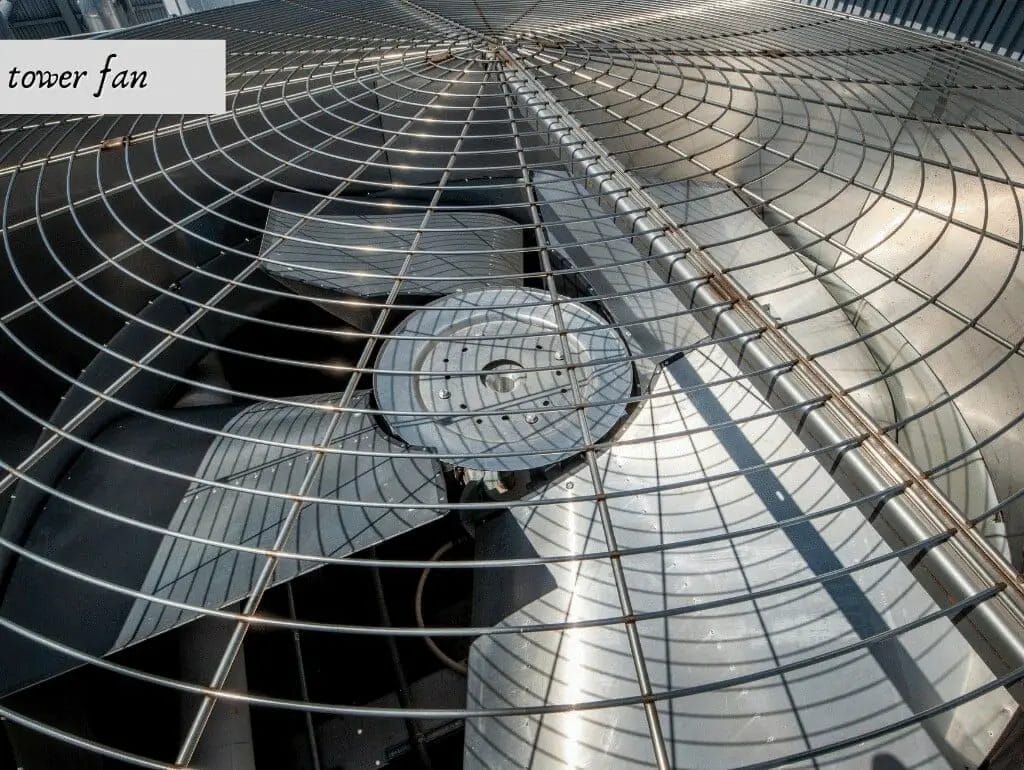
They come tall and slim. Most homes have them. Tower fans are famous because of their compactness. They are also lightweight, making it easier to transport them to various locations within your house. Despite their small size, they are renowned for effectively cooling down an entire home. Here is how they operate;
How Does Tower Fans Work?
Tower fans operate by sucking air from a space. It then pushes the air out through its long vents located within the fan’s height. Near below the fan’s cylindrical housing, you will find the impeller blades responsible for directing air into the slim tower casing.
While in the casing, the air gets narrow and focused. An impeller fan also pushes the air out by the vertical shaft and into the air guide. It then exits it through the vents.
Tower fans consist of several essential features. To identify them, look out for the following characteristics;
Tower Fan Features
- They come with variable speed settingsfor convenience and optimum efficiency. You get to choose the level of coolness to receive from the fan.
- A tower fan comes with remote controlfor more effortless operation. You control the fan while seated at a distance. You don’t have to touch the fan to operate it.
- Most tower fans come with an in-built timer. You can set it to go on or off after different times, saving your energy and money.
- Easy to understand controls. Even a kid can operate them.
- Some come with filters and ionizersto clean your house’s air.
Typical tower fans come with blades, but the market now has bladeless tower fans. Their popularity is increasing rapidly due to their outstanding features. A great example is the Dyson Cool AM07. This fan is more power-efficient, safer, quieter, and powerful. Bladeless fans use a combination of different technologies for optimal results. Here is how they operate;
How Bladeless Tower Fans Operate
The fans’ bottom consists of a sucker that sucks air and pulls it up to the hoop-like tube located at the top. From here, it gets expelled into the room. Others use the ‘Air Multiplier’ technology, which produces a powerful airflow stream. Air flowing in the fan’s circular hoop-like tube gets pushed out at high pressure.
The air being sucked into the tube gets dispatched to flow out 15 – times stronger than a standard fan. Though tower fans cool down a room effectively and come with some standard features, you can get a tower fan with added features for a better user experience. But you will need to spend much of your money.
What’s impressive about these fans is that you can get a blade or bladeless option, safe with children and pets, quiet, compact design, and portable. The only drawback is that it can be challenging to clean a tower fan.
2. Ceiling Fans
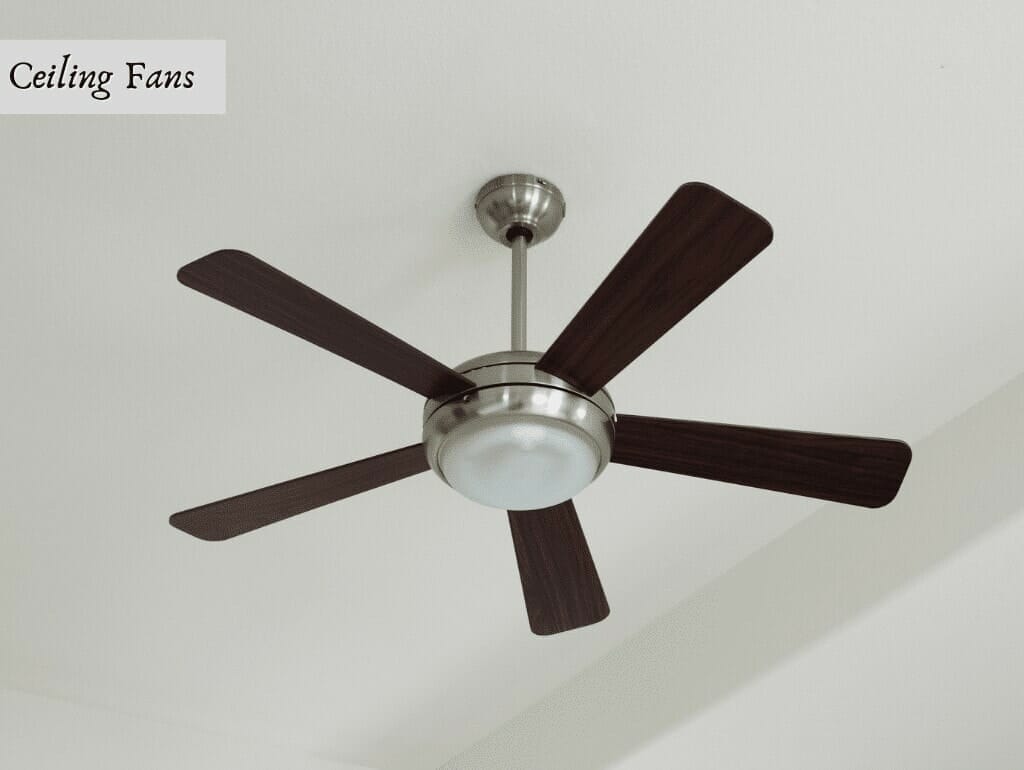
You probably have one or have seen it in a home because they are ubiquitous in most households. Like the name denotes, ceiling fans get suspended or installed in the ceiling of a room. It comes in four parts. To help you understand a ceiling fan better, let’s look into its components;
Parts of a Ceiling Fan
The four parts include;
- Canopy: It houses the wires, balances the ceiling fan, and holds the fan’s down rod.
- Down Rod: Ensures the fan is slightly farther from the ceiling and secures the ceiling fan’s lower part.
- The Housing: It covers the fan’s motor and ensures it doesn’t get water or dust.
- Blades: They come three or more to move the air
The ceiling fan’s blades may make it look beautiful and stylish, but their number affects its performance. Are you wondering how? Check out the following;
How the Number of Blades Affects a Ceiling Fan
When the blades in a fan increase, it becomes quieter but circulates less air. More edges make the ceiling fan slow down due to the increased drag. If you need to move a lot of air in your room, you need to pick a ceiling fan with fewer blades. The disadvantage of such a fan is that the noise level will go up.
That is why industrial fans come with two or three blades. In return, they move more air very quickly. But thanks to technological advancement, ceiling fans with more blades have been improved to reduce drag and move more air, making them work better.
Despite having blades, ceiling fans come with other features as follows;
Features of Ceiling Fans
- Some get controlled by remote control, which can either be handheld or fixed on the wall
- Others come with chandelier or light, increasing their functionality and aesthetic appeal
- You will also find ceiling fans with added features like dual motors and heaters
Ceiling fans are made for indoors, but there are options for outdoors. Indoor ceiling fans cannot perform well in the outdoor environment. If you need to use one outside, go for the ceiling fan made specifically for the outside. The fan’s UL Rating will help you determine if it’s ideal to use indoors or outdoors.
The UL rating indicates a fan’s tolerance level. The ratings are of three types as follows;
Ceiling Fans UL Ratings
- Dry Rated:You can only use such a fan indoors
- Damp Rated:The fan can withstand moisture but not water. When the fan comes into contact with water, it breaks down. You can use it outdoors as long as it’s well covered.
- Wet Rated:The fan is resistant to any weather and will work excellently outdoors.
What is impressive about ceiling fans is that they cool and heat a room. They spin in both directions to affect your room’s temperature. During hot days, the fan’s blades rotate anticlockwise to cool your house. While moving in this direction, the air gets forced to circulate, making it cool.
On cold days, the fan moves clockwise, making the warm air resting on the room’s upper side come down, creating a warm effect in the space. If you want to buy a ceiling fan, consider your room’s size and the appropriate location. Ceiling fans come in different sizes to accommodate various room sizes. When installed in a proper place, a ceiling fan works out efficiently.
The only setback with this fan is that it can be noisy and not ideal for rooms with low heights.
You may also check our other article and find some tips on how to reduce fan noise.
3. Table or Desk Fans

You can easily spot a table or desk fan by its small size. They are also lightweight, making them easy to carry around. They come designed to sit comfortably in flat places. That is why they rest on any table or desk without causing any clutter. If you want to identify a table or desk fan, here is what to look for;
Features of a Table or Desk Fan
- Designs: They come in various styles like the pedestal and tower designs
- Casing: To protect your fingers
- Stand: Enables the fan to sit upright on a flat surface
Because of their small sizes, desk fans are ideal to use by one person. You can utilize it while studying or working at home. It works out great anywhere. Besides, it’s easy to carry around. If using your bedroom, you can place it on your makeup or dressing table. You can also take it with you while you travel or busy with an outdoor activity. It will help you cool down during the hot weather.
Table or desk fans consist of oscillation and tilting options. You get to choose the type you like. They entail the following;
Table or Desk Fan Options
- Oscillating Options: They swing or move their heads back and forth in a particular rhythmto ensure all the air in the room has gotten circulated.
- Tilting Options: The heads tilt in the front or back at a certain angleto circulate more air.
You get to buy the option that suits and pleases you.
Manufacturers of the table or desk fans are becoming innovative while designing them to achieve optimal results. When buying one, consider the features discussed above and the extra capabilities installed in the fan. Though the added features may increase the fan’s cost, they are worth having.
Most table and desk fans come with a power cord. Consider the fan with a long power cord so that you can move it far from the power plug to any convenient location in the room without any restrictions. The fan usually gets placed next to the user. In this regard, consider the noise level of the table or desk fan you choose.
It is not wise to buy a desk or table fan because your friend or a family member has it. Consider what you prefer and like. Though these fans are easy to maintain, cheap, and portable, they cannot cool a big area.
If you want to learn more about the best silent fans, check our other article.
4. Pedestal Fans

They are also known as standing fans. What makes these fans stand out from the rest is their fast action in cooling a room. Thanks to their oscillating feature. Their metal stands can get adjusted to stand anywhere from 2 – feet. The fan’s head rests on the stand and consists of blades protected by a metal house. The user then gets safeguarded from the edges, which can harm him when touched while rotating.
The blades inside a pedestal fan are usually two or more. The incredible features of these fans win the hearts of many users. They include;
Features of Pedestal Fans
- Designed to oscillate
- The fans come with adjustable heights
- The blades are either two or more
- Very portable
- Modern features consist of remote control and several speed settings
Thanks to their lightweight, unlike the tower and ceiling fans, you can easily change them from one location to another. To change the airflow direction, you only need to change the fan. For example, you can adjust the fan’s height to make the area above your bed cool.
With their oscillating function, pedestal fans cool an entire room. Today, these fans’ manufacturers have used the latest technology to improve their functionality. That is why you will find pedestal fans with timers and remote controls. The heads also come with multi-directional oscillation.
If you want to cool air around various obstacles like furniture, a pedestal fan will work out great because you can adjust its height. Unlike the tower fans, pedestal fans don’t come with many features, but they are useful and cheap. If you need one for your home, consider the level of noise, room size, and price. You will also need something that will add to your home’s theme and beauty. Consider the design and color.
The only drawback of this design is that large grills can be dangerous for pets and kids. They can easily place their paws and fingers through the grills to the blades, hurting them when in operation. Keep these fans away from kids and your furry friends.
5. Window Fans
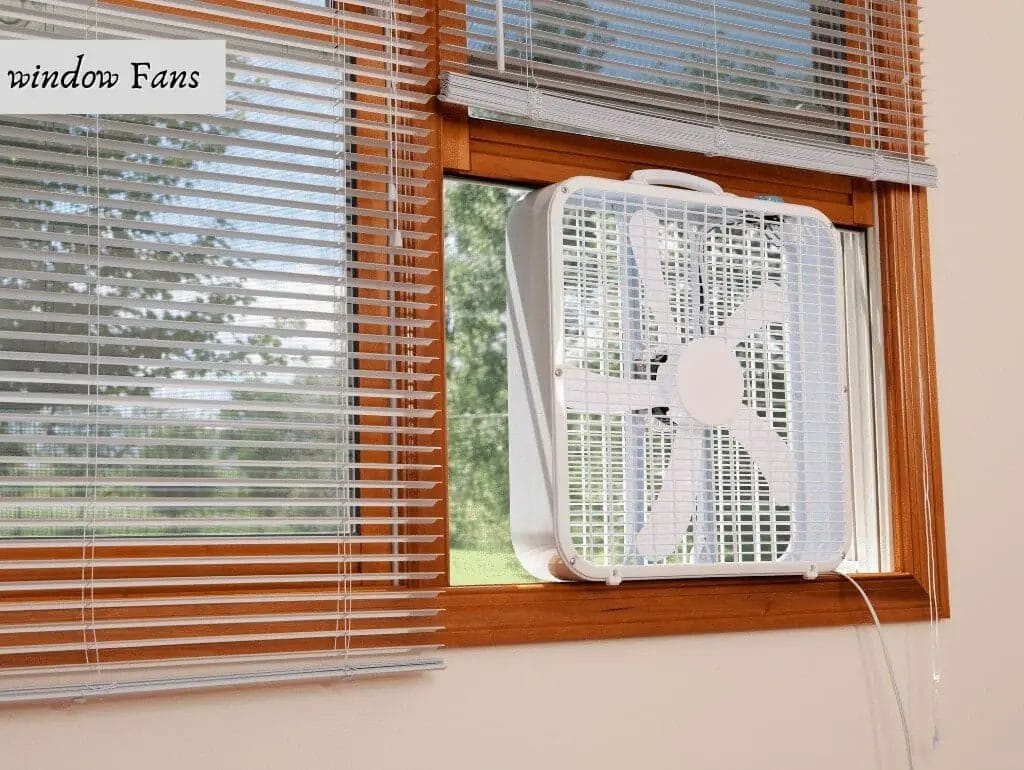
As the name suggests, these fans get mounted on the windows and sometimes walls. Unlike most fans that create a cool atmosphere only, these fans also replace the air. It does so simultaneously. As it cools the air, it replaces it with fresh air.
Window fans come in different sizes and designs. They also come with the following features;
Features of a Window Fan
- It resists water
- It is remotely controlled
- It comes with independent control of fan
- The extender screen is adjustable
- The motor is reversible
- It has a thermostat
If you want to expel and move more air, consider a large window fan. Alternatively, you can go for a window fan with two fans. Such a fan gets referred to as a twin fan. Before buying this fan, consider your window’s size. Then go for a window fan of the same size. If not possible, get a fan with an extender screen you can adjust.
If your home is significant, you will need several window fans to effectively cool your space. The fans’ effectiveness will also rely on their quality. Many window fans work out effectively. But for optimal results, ensure the number of window fans blowing out air is the same as those blowing in the air.
You don’t just place a window fan anywhere on the window. You need to set it in a specific position and location on the window for optimal results. It gets recommended that you set the window fan on your home’s shady side. It will cool your room faster.
If you live in a multi-story house, the ground-level fans should blow in the air while those on the upper level blow out the rising warm air.
Modern window fans come with added features for an excellent user experience. For example, some have an adjustable extender screen to help you fit the window fan if it doesn’t fit correctly. Also, the independent fan control in twin fans allows you to control the fans independently for better efficiency. The only disadvantage of window fans is that they don’t work correctly in humid environments.
6. Wall-Mounted Fans

For people with less floor and ceiling space, wall-mounted fans are the best options to use. If your room is compact with a very high ceiling, the wall-mount fan option gives you an alternative location for your fan.
It is easy to confuse the wall-mount fans with the pedestal fans because the style and design resemble. The head comes with three blades covered with a metal mesh. The stand is short and comes attached to the fan’s housing. It is the stand that gets fixed on the wall. The stand’s type determines the amount of air the fan can blow. It can circulate cold air at 360 degrees, meaning you can use them to move air around any room.
A wall-mounted fan works differently from a pedestal and ceiling fan. Here is the insight;
How a Wall-Mounted Fan Works
Ceiling fans move air throughout a space during summer. It helps redistribute warm air found above a room to warm-up your space on cold days. But a wall-mount fan does not work this way. It pushes air horizontally. If you use a small fan and low quality, you may not feel the effect.
You can identify wall-mounted fans with the following features;
Features of a Wall-Mounted Fan
- Remote control
- Oscillates in different directions
- Contains different speed settings
- It has a short stand
If you want to buy a wall-mounted fan:
- Consider your space size.
- Choose a fan that can handle your room size for adequate airflow.
- Ensure you fix it strategically on your wall for optimal results. If a fan can operate at high speed, it will circulate a lot of air quickly.
- Consider the rate at which the wall-mounted fan operates.
A fan with various speed settings will work out best. You can test and see the best speed for your room. Because it gets installed on the wall, the way the fan looks and its color matters. Look for a fan that complements your room’s interior décor and improves the look of the space. Sleek and elegant designs get preferred best.
Most wall-mounted fans come with mounting equipment and brackets, making them easy to fix on the wall. Because they come in different models and stand heights, installing them may differ. You need to check the manufacturer’s mounting manual or seek a professional’s services.
7. Exhaust Fans
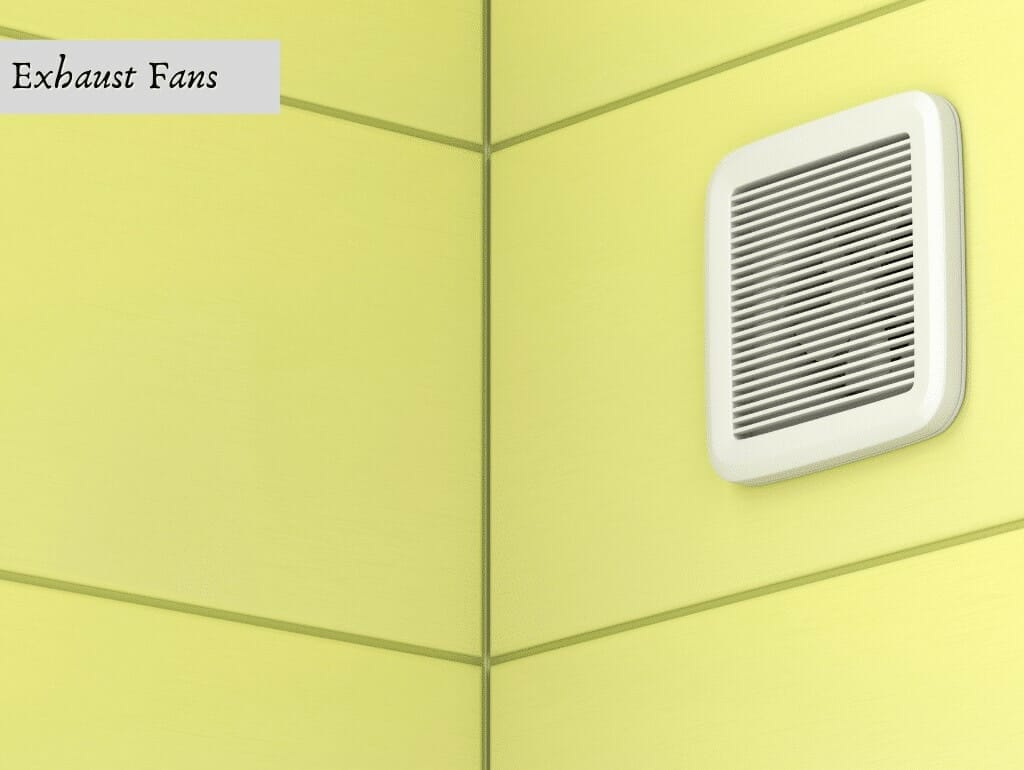
Exhaust fans get designed to improve air quality and balance temperature in a room. Mostly, they get rid of odors and excess moisture, making them ideal for places like the bathroom, kitchen, or laundry area. Their work mechanism makes them perform their duties excellently. Here is how they operate;
How an Exhaust Fan Works
It consists of a powerful fan that pulls bad smells, moisture, and fumes from the room and expels it outside. Most of them get powered by electricity and use a switch to control it. The switch gets fixed on the wall. Exhaust fans contain the following features;
Features of an Exhaust Fan
- Controlled through a wall switch
- Some get vented directly outside, while others usually get installed in the house’s ventilation system
- Some have built-in thermostatsto signal and maintain the correct temperature
Some exhaust fans don’t get ducted, meaning you cannot connect them to your ventilation system or vent them outside. They operate by moving air to the attic or roof. Others use charcoal filters to clean the air, and then release it back into your room.
The above fan types can either use blades or not. Both types operate differently and come with their strengths and weakness. Here is the insight.
How Fans with Blades Work
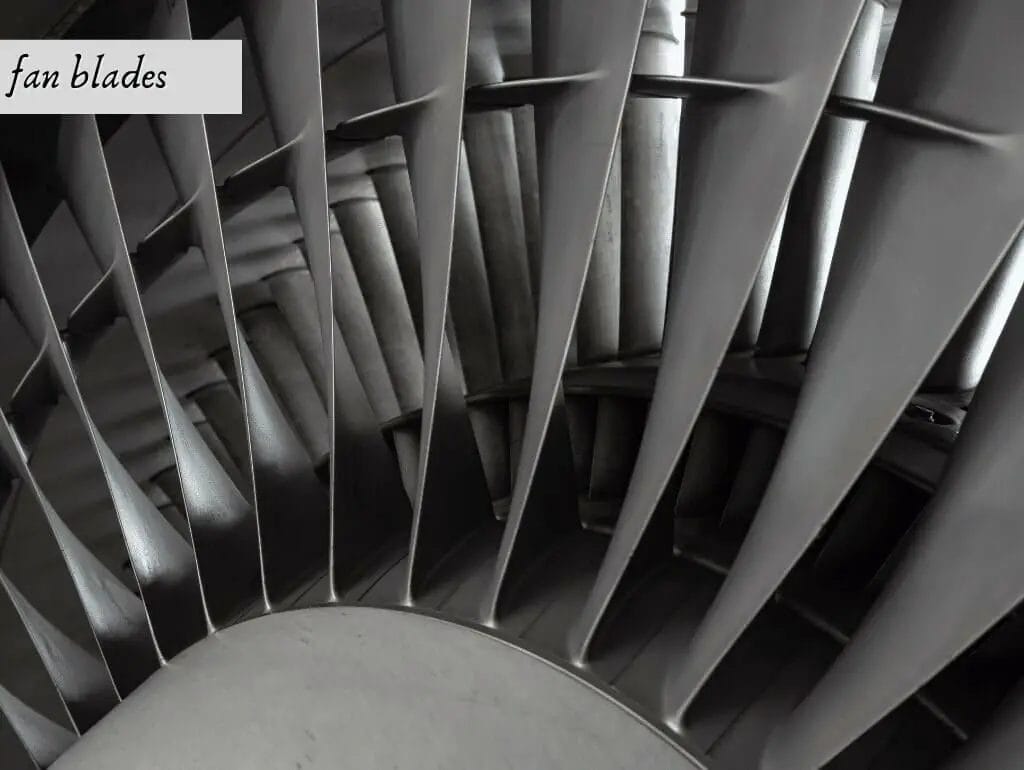
The blades rotate to circulate the air in the room. Its effectiveness depends on the fan’s size and the number of blades. Speed also is a contributing factor. If a fan has fewer blades, it will rotate faster, increasing the airflow. But such a fan is likely to make some disturbing noise. A fan rotates slowly when it has more blades. As a result, it circulates less air but hardly produces any sound.
Benefits of Fans with Blades
- They use less energy if they have fewer blades
- Circulates air effectively
- It keeps you cool during the hot season
- It comes at an affordable price
- It offers an aesthetic appeal
- Come in different sizes to accommodate various room sizes
- Have added features for a better user experience
- Make less noise
- Value for your money for those with a warranty
Disadvantages of Fans with Blades
- Uses a lot of energywhen they have many and large blades
- Those with few blades may make disturbing sounds
- If the protective cover comes with large grills, it is easy for a child or pet to get in their fingers or paws and get harmed
How Fans without Blades Work
These fans come with brushless electric motors instead of blades to cool and clean air in a room. The motor sucks in the air and directs it inside the circular tube. From here, it gets emitted through an opening into the outside.
Most bladeless fans come with multi-functions. They cool the room, maintain the temperature, and clean the air. The blown-in air gets passed through filters to clean it before being exited back into the room. As a result, these fans get preferred by many. Here are their added benefits;
Advantages of Fans without Blades
- You can get one for every space size
- They come in various designs and styles to suit the preferences of many people
- The fans cool air, control temperature, and clean the air effectively
- Some come with extra capabilities to improve the user experience
- They are smart devices easy to operate
- Very safe to operate
Despite the many benefits, they also contain the following setbacks;
Disadvantages of Fans without Blades
- Due to the technologies used in moving air, added features, and smart capabilities, they come at a high price
- Some people may find it challenging to use the smart features
Conclusion
As illustrated above, fans come in many types and inhibit different features. They are essential to use in our homes and workplaces during the hot season. Because there is a fan designed for every kind of space, it is wise to get one ideal for your room.
When choosing a fan for your space, consider their various features, as discussed above. Go for what will meet your needs, preference, and budget. You can choose between the fan types discussed above. They can either be bladeless or with blades. As illustrated above, both options come with their strengths and weaknesses. The choice is yours.
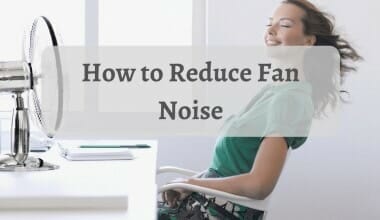
![The Best Quiet Air Purifier That Won't Disturb Your Day or Night in [year] 1](https://eyryfokzopx.exactdn.com/wp-content/uploads/2023/06/air-purifier-380x220.jpg?strip=all&lossy=1&ssl=1)